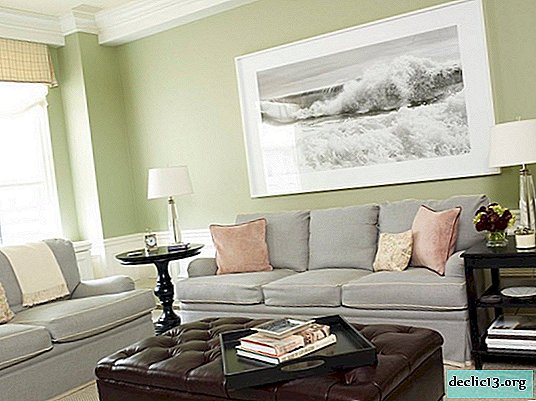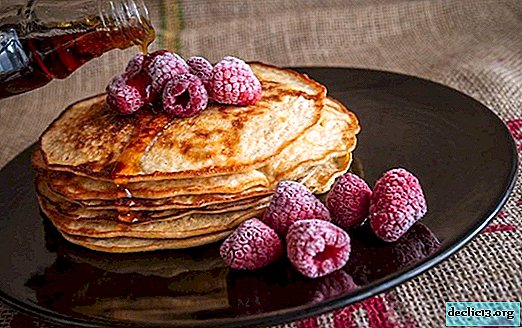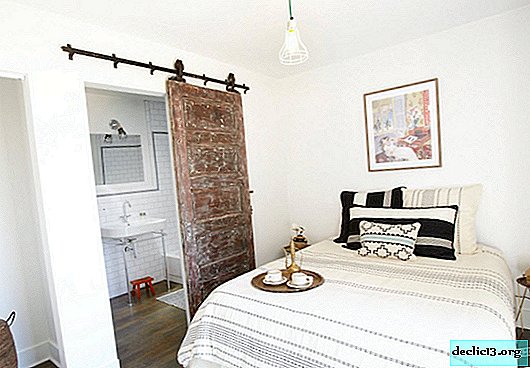How to weave baubles made of floss

Baubles in many countries are a symbol of friendship. However, this unusual handmade bracelet, which first appeared on the territory of North America, was previously intended for other tasks. The Indians made such jewelry to protect against evil spirits, treat all sorts of ailments, conduct marriage rituals, and even tied braided braids of various herbs and threads on the soldiers' wrists.
Today, a bracelet, woven with their own hands from threads, leather, beads or glass beads, rather plays the role of an original jewelry than a magical attribute. When you can buy everything, any thing made by yourself has no less value than shamanistic talismans. In this article, I will examine in detail several types of weaving accessories made of mouline thread, give useful recommendations to beginner needlewomen and help in creating bright bracelets that are suitable for personal use as well as a gift.
Preparatory stage
Any craftswoman who has already managed to create several woven bracelets will advise a thread for flossing. They have a soft, pliable structure, due to which the products are created quickly, and when worn - they are pleasant, comfortable and durable. Another advantage of this material is that it is available in bright, rich colors and shades. When choosing, pay attention to the length of the thread. It is not recommended to take threads shorter than one meter, since during the knitting process, their length will be reduced by about four times.
In addition to the basic material, needlewomen should stock up with scotch tape, paper clips, ordinary pins and stationery clips. All this is useful for fixing threads on a flat surface and simplifying weaving.
There are many styles of weaving, but classical methods are more popular: direct and oblique weaving. Direct weaving is characterized by a variety of patterns and ornaments that can be done using this technique. Moreover, it is considered more complex and time-consuming. Oblique weaving is suitable for beginners, since the design of the “oblique” baubles, quickly mastered, and the finished product looks very stylish.
Straight weaving from floss thread

A beautiful bracelet made using the direct weaving technique can be a visiting card of any master, because braiding baubles in this way is not easy. If you are just starting to try your hand, it’s best to train your hand on simpler knitting methods.
However, if you still decide to try to create an ornament, follow the following instructions for beginners:
- The color and number of bundles of mouline thread is selected based on the intended pattern on the bracelet.
- Each color must be separated from the rest and make sure that they do not mix in a chaotic manner.
- The length of the threads for knitting a pattern depends on its size.
- The larger the ornament, the longer the bundle will be required.
- The leftmost thread is conventionally called the leading one. It is necessary to tie the threads that will serve as an internal background and go immediately after it.
- As soon as the left thread reaches the right side, the action algorithm runs back to the left. Acting this way, our thread moves to the right, then to the left, covering itself with the inner main thread.
- In places where the drawing should be, the main thread is intertwined with those used in its creation.
Video lesson
Oblique weaving - a step-by-step plan
I will consider in detail the various methods of oblique weaving using schemes.
- The "rope" method. Requires the use of two threads of different colors with a length of 1.5 meters. Each of them is folded in half, knotted and attached to a flat surface. Further weaving should take place according to this pattern.
- The bauble, knitted in the "ribbon" way, looks great in juicy summer colors. For the manufacture you will need four two-meter threads, which must be folded in half and tied in a knot. Then we continue to work according to the diagram shown.
- The woven bracelets in the “classic” style impress with a simple pattern and easy knitting. To make such an ornament, you will need six meter threads of three different colors. The mouline thread is knotted from above and placed in a line of threads of paired colors. The first one is knotted on each subsequent thread. Next we do the same operation. So each new extreme thread fits.
Features weaving of 4 and 2 threads
Bracelets created with a pair of threads do not differ in intricate patterns, but this does not prevent them from looking original. For the product, it is desirable to choose a floss of different colors with a length of at least a meter.
Knitting is carried out according to the following principle:
- Both threads are tied at the end with a knot and secured with tape or pins.
- We pull the left thread, and with the right we make a ring around the left and thread the tip inside the loop. The eyelet neatly tightens upward.
- Thus, we make the second node.
- For the third knot, we change the threads in places, and do the rest according to the same algorithm.
- Knitting alternately knots with one or another thread, we go down and at the end we knit in one knot. Your bauble is ready.
Weaving of four threads is carried out according to the same principle.
How to weave baubles with names and inscriptions
Baubles with names and inscriptions are woven according to the direct weaving scheme, but instead of a pattern or drawing on the bracelet, a word, name or a whole phrase is woven. To make letters look expressive, beginners are advised to work on them on a stencil. You can do it yourself from plain paper. To do this, you need to calculate the width of each letter and the distance between them. It is important not to forget to make the same indentation for each letter from the edge of the bracelet - this way the word will look better.
Video instruction
Useful Tips
- During work, take a comfortable and proper posture, use good lighting and a comfortable place. Never neglect these rules. Weaving at home should be fun and not leave behind back pain or pain in the eyes.
- Fasten the threads on a flat, clean and dry surface. This can be a desktop, to which they are fixed on an adhesive tape, a hard cover of a book and clothespins or a stationery tablet with a clip. The main thing is that the workpiece is held firmly and comfortably braided.
- Give preference to quality threads. Even an experienced needlewoman will not get a beautiful picture if the material has faded, fluffed or is too thin. The quality, beauty and durability of the bracelet depend on this.
And in conclusion, I add that the dexterity in the work, brought to automatism, over time begins to help itself to display a variety of patterns. There is no need to use schemes. There is an experience that allows you to experiment with other materials and textures. Each product takes less and less time, and fine motor skills and imagination develop in exchange and the jewelry box is replenished. Do not put off until tomorrow what can be woven today. I hope the article was useful to you.

















